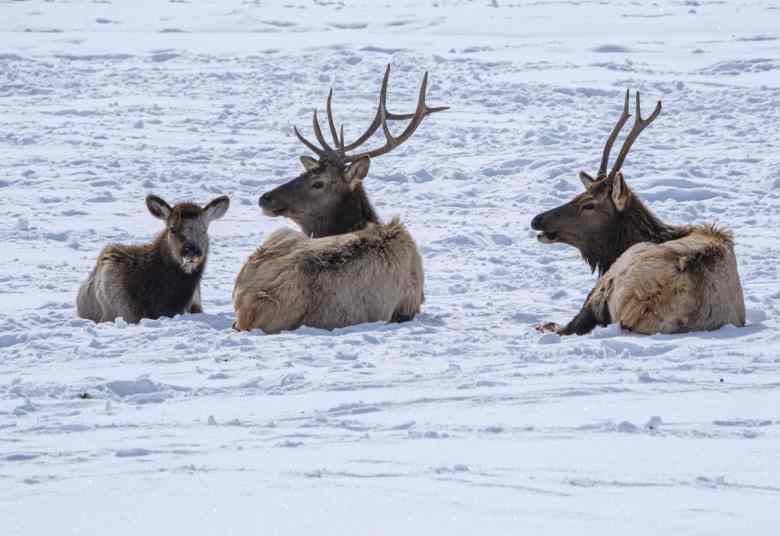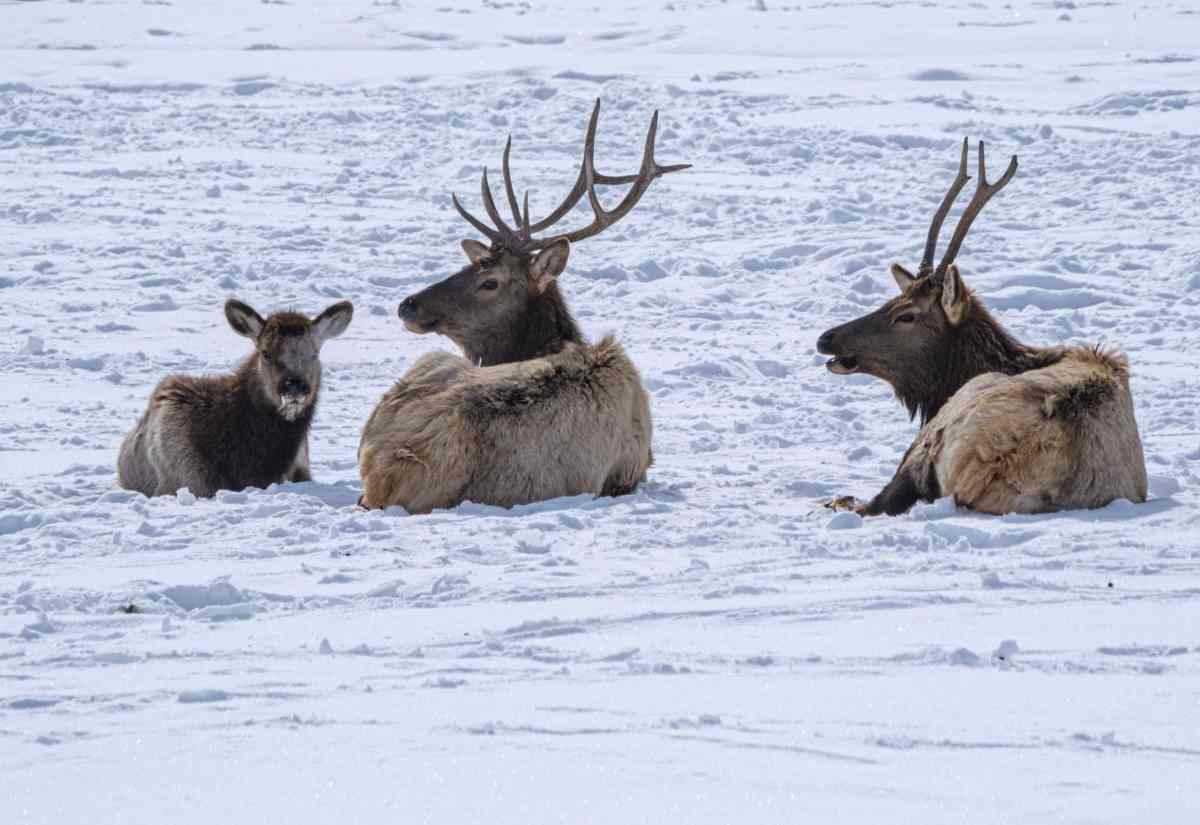
Early Saturday morning, a line of cars snaked out of the ice fog on S.R. 224, from I-80 to Canyons, two and three abreast, the occupants anticipating runs in the newly fallen snow. The traffic cleared farther south, then came to a dead stop just north of the McPolin Barn as a herd of about 40 elk made its way across the highway and scaled the bluffs on the east side. Some paused on the steep path they make by walking, waiting for sisters, brothers, sons and daughters, and here and there you could see the chest of a cow or a bull heave and the clouds of their breath float above their heads.
Waiting for them, watching them, was enough to make at least one driver forget about human convenience and sit in silence, other than saying softly to a border collie riding shotgun, “Look at the elk…”
That collie didn’t need to be told. He’s always anticipating miracles.
A herd of elk like that, crossing a highway, ought to be called a visitation.
Still, farther north, as motorists gloated over the fresh snow and the skiing ahead, somewhere not far there had to be an elk or a mule deer thinking, “No bueno.”
We know that wildlife is already being hurt by climate change, as are humans, from the effects of prolonged drought to the atmospheric rivers that socked the California coast at the beginning of January and left us with heavy snow.
That same snow is leaving the mule deer that share our valleys on the edge of starvation, a place that they know in their bones — and leading to people feeding them, a controversial practice even by the Utah Division of Wildlife Resources (see the article on A-1).
When we heard two weeks ago that a pair of bull elk had been spotted in the Yalecrest neighborhood on the east side of Salt Lake City, a sight so unusual it made headlines, our first thought was, “Those are our elk.” And it brought to mind Oscar Wilde, who, when he was led handcuffed to Redding Gaol, remarked, “If this is how Her Majesty treats her prisoners, she doesn’t deserve to have any.”
Salt Lake police theorized the elk were drawn by fresh salt on the roads, which is certainly possible; but their appearance there is, as the psychoanalysts say, overdetermined. It is equally likely those elk migrated down to escape heavy snow, in search of food and life. Something similar transpired with a herd of about 60 elk that appeared on I-80 last week around the mouth of Parley’s Canyon, by Foothill Drive. At least one, a cow, was hit and killed by a vehicle.
There is a comical hubris in believing we know where an elk belongs. They follow other, older imperatives that we traded for capitalism, agriculture, industry, commerce and what we deign to call civilization. They are perfect unto themselves, yet in a changing world we have taken them hostage.
If we have dominion over them — as in state wildlife officers using snowmobiles to try to herd the elk from Salt Lake City back into the mountains — we also have responsibility.
The naturalist Henry Beston had at least one great thought, which he expressed in his book “The Outermost House,” in 1928. Other animals, Beston wrote, in a world older and more complete than ours, “move finished and complete, gifted with the extension of the senses we have lost or never attained, living by voices we shall never hear. They are not brethren, they are not underlings: they are other nations, caught with ourselves in the net of life and time.”
Under other circumstances, at other times, feeding deer and elk in winter was disputed and perhaps unwise. But in times such as these, speaking just of climate, it may be the thing we can do that is most fully human and humane.

